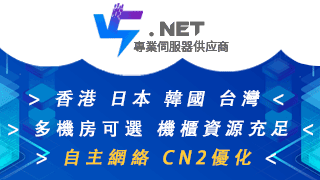Go json包
Marshal():Go数据对象 -> json数据
UnMarshal():Json数据 -> Go数据对象
func Marshal(v interface{}) ([]byte, error) func Unmarshal(data []byte, v interface{}) error
构建json数据
Marshal()和MarshalIndent()函数可以将数据封装成json数据。
1、struct、slice、array、map都可以转换成json
2、struct转换成json的时候,只有字段首字母大写的才会被转换
3、map转换的时候,key必须为string
4、封装的时候,如果是指针,会追踪指针指向的对象进行封装
例如:
有一个struct结构:
type Post struct { Id int Content string Author string }
这个结构表示博客文章类型,有文章ID,文章内容,文章的提交作者。这没什么可说的,唯一需要指明的是:它是一个struct,struct可以封装(编码)成JSON数据。
要将这段struct数据转换成json,只需使用Marshal()即可。如下:
post := &Post{1, "Hello World", "userA"} b, err := json.Marshal(post) if err != nil { fmt.Println(nil) }
Marshal()返回的是一个[]byte类型,现在变量b就已经存储了一段[]byte类型的json数据,可以输出它:
fmt.Println(string(b))
结果:
{"Id":1,"Content":"Hello World","Author":"userA"}
可以在封装成json的时候进行"美化",使用MarshalIndent()即可自动添加前缀(前缀字符串一般设置为空)和缩进:
c,err := json.MarshalIndent(post,"","t") if err != nil { fmt.Println(nil) } fmt.Println(string(c))
结果:
{ "Id": 1, "Content": "Hello World", "Author": "userA" }
除了struct,array、slice、map结构都能解析成json,但是map解析成json的时候,key必须只能是string,这是json语法要求的。
例如:
// slice -> json s := []string{"a", "b", "c"} d, _ := json.MarshalIndent(s, "", "t") fmt.Println(string(d)) // map -> json m := map[string]string{ "a":"aa", "b":"bb", "c":"cc", } e,_ := json.MarshalIndent(m,"","t") fmt.Println(string(e))
返回结果:
[ "a", "b", "c" ] { "a": "aa", "b": "bb", "c": "cc" }
使用struct tag辅助构建json
struct能被转换的字段都是首字母大写的字段,但如果想要在json中使用小写字母开头的key,可以使用struct的tag来辅助反射。
例如,Post结构增加一个首字母小写的字段createAt。
type Post struct { Id int `json:"ID"` Content string `json:"content"` Author string `json:"author"` Label []string `json:"label"` } postp := &Post{ 2, "Hello World", "userB", []string{"linux", "shell"}, } p, _ := json.MarshalIndent(postp, "", "t") fmt.Println(string(p))
结果:
{ "ID": 2, "content": "Hello World", "author": "userB", "label": [ "linux", "shell" ] }
使用struct tag的时候,几个注意点:
1、tag中标识的名称将称为json数据中key的值
2、tag可以设置为`json:"-"`来表示本字段不转换为json数据,即使这个字段名首字母大写
如果想要json key的名称为字符"-",则可以特殊处理`json:"-,"`,也就是加上一个逗号
3、如果tag中带有,omitempty选项,那么如果这个字段的值为0值,即false、0、""、nil等,这个字段将不会转换到json中
4、如果字段的类型为bool、string、int类、float类,而tag中又带有,string选项,那么这个字段的值将转换成json字符串
例如:
type Post struct { Id int `json:"ID,string"` Content string `json:"content"` Author string `json:"author"` Label []string `json:"label,omitempty"` }
解析json数据到struct(结构已知)
json数据可以解析到struct或空接口interface{}中(也可以是slice、map等)。理解了上面构建json时的tag规则,理解解析json就很简单了。
例如,下面是一段json数据:
{ "id": 1, "content": "hello world", "author": { "id": 2, "name": "userA" }, "published": true, "label": [], "nextPost": null, "comments": [{ "id": 3, "content": "good post1", "author": "userB" }, { "id": 4, "content": "good post2", "author": "userC" } ] }
分析下这段json数据:
1、顶层的大括号表示是一个匿名对象,映射到Go中是一个struct,假设这个struct名称为Post
2、顶层大括号里的都是Post结构中的字段,这些字段因为都是json数据,所以必须都首字母大写,同时设置tag,tag中的名称小写
3、其中author是一个子对象,映射到Go中是另一个struct,在Post中这个字段的名称为Author,假设名称和struct名称相同,也为Author
4、label是一个数组,映射到Go中可以是slice,也可以是array,且因为json array为空,所以Go中的slice/array类型不定,比如可以是int,可以是string,也可以是interface{},对于这里的示例来说,我们知道标签肯定是string
5、nextPost是一个子对象,映射到Go中是一个struct,但因为json中这个对象为null,表示这个对象不存在,所以无法判断映射到Go中struct的类型。但对此处的示例来说,是没有下一篇文章,所以它的类型应该也是Post类型
6、comment是子对象,且是数组包围的,映射到Go中,是一个slice/array,slice/array的类型是一个struct
分析之后,对应地去构建struct和struct的tag就很容易了。如下,是根据上面分析构建出来的数据结构:
type Post struct { ID int64 `json:"id"` Content string `json:"content"` Author Author `json:"author"` Published bool `json:"published"` Label []string `json:"label"` NextPost *Post `json:"nextPost"` Comments []*Comment `json:"comments"` } type Author struct { ID int64 `json:"id"` Name string `json:"name"` } type Comment struct { ID int64 `json:"id"` Content string `json:"content"` Author string `json:"author"` }
注意,前面在介绍构建json数据的时候说明过,指针会进行追踪,所以这里反推出来的struct中使用指针类型是没问题的。
于是,解析上面的json数据到Post类型的对象中,假设这个json数据存放在a.json文件中。代码如下:
func main() { // 打开json文件 fh, err := os.Open("a.json") if err != nil { fmt.Println(err) return } defer fh.Close() // 读取json文件,保存到jsonData中 jsonData, err := ioutil.ReadAll(fh) if err != nil { fmt.Println(err) return } var post Post // 解析json数据到post中 err = json.Unmarshal(jsonData, &post) if err != nil { fmt.Println(err) return } fmt.Println(post) }
输出结果:
{1 hello world {2 userA} true [] <nil> [0xc042072300 0xc0420723c0]}
也许你已经感受到了,从json数据反推算struct到底有多复杂,虽然逻辑不难,但如果数据复杂一点,这是件非常恶心的事情。所以,使用别人写好的工具来自动转换吧。本文后面有推荐json到数据结构的自动转换工具。
解析json到interface(结构未知)
上面是已知json数据结构的解析方式,如果json结构是未知的或者结构可能会发生改变的情况,则解析到struct是不合理的。这时可以解析到空接口interface{}或map[string]interface{}类型上,这两种类型的结果是完全一致的。
解析到interface{}上时,Go类型和JSON类型的对应关系如下
JSON类型 Go类型 --------------------------------------------- JSON objects <--> map[string]interface{} JSON arrays <--> []interface{} JSON booleans <--> bool JSON numbers <--> float64 JSON strings <--> string JSON null <--> nil
例如:
func main() { // 读取json文件 fh, err := os.Open("a.json") if err != nil { fmt.Println(err) return } defer fh.Close() jsonData, err := ioutil.ReadAll(fh) if err != nil { fmt.Println(err) return } // 定义空接口接收解析后的json数据 var unknown interface{} // 或:map[string]interface{} 结果是完全一样的 err = json.Unmarshal(jsonData, &unknown) if err != nil { fmt.Println(err) return } fmt.Println(unknown) }
输出结果:
map[nextPost:<nil> comments:[map[id:3 content:good post1 author:userB] map[id:4 content:good post2 author:userC]] id:1 content:hello world author:map[id:2 name:userA] published:true label:[]]
上面将输出map结构。这是显然的,因为类型对应关系中已经说明了,json object解析到Go interface的时候,对应的是map结构。如果将上面输出的结构进行一下格式化,得到的将是类似下面的结构:
map[ nextPost:<nil> comments:[ map[ id:3 content:good post1 author:userB ] map[ id:4 content:good post2 author:userC ] ] id:1 content:hello world author:map[ id:2 name:userA ] published:true label:[] ]
现在,可以从这个map中去判断类型、取得对应的值。但是如何判断类型?可以使用类型断言:
func main() { // 读取json数据 fh, err := os.Open("a.json") if err != nil { fmt.Println(err) return } defer fh.Close() jsonData, err := ioutil.ReadAll(fh) if err != nil { fmt.Println(err) return } // 解析json数据到interface{} var unknown interface{} err = json.Unmarshal(jsonData, &unknown) if err != nil { fmt.Println(err) return } // 进行断言,并switch匹配 m := unknown.(map[string]interface{}) for k, v := range m { switch vv := v.(type) { case string: fmt.Println(k, "type: stringnvalue: ", vv) fmt.Println("------------------") case float64: fmt.Println(k, "type: float64nvalue: ", vv) fmt.Println("------------------") case bool: fmt.Println(k, "type: boolnvalue: ", vv) fmt.Println("------------------") case map[string]interface{}: fmt.Println(k, "type: map[string]interface{}nvalue: ", vv) for i, j := range vv { fmt.Println(i,": ",j) } fmt.Println("------------------") case []interface{}: fmt.Println(k, "type: []interface{}nvalue: ", vv) for key, value := range vv { fmt.Println(key, ": ", value) } fmt.Println("------------------") default: fmt.Println(k, "type: nilnvalue: ", vv) fmt.Println("------------------") } } }
结果如下:
comments type: []interface{} value: [map[id:3 content:good post1 author:userB] map[author:userC id:4 content:good post2]] 0 : map[id:3 content:good post1 author:userB] 1 : map[id:4 content:good post2 author:userC] ------------------ id type: float64 value: 1 ------------------ content type: string value: hello world ------------------ author type: map[string]interface{} value: map[id:2 name:userA] name : userA id : 2 ------------------ published type: bool value: true ------------------ label type: []interface{} value: [] ------------------ nextPost type: nil value: <nil> ------------------
可见,从interface中解析非常复杂,而且可能因为嵌套结构而导致无法正确迭代遍历。这时候,可以使用第三方包simplejson,见后文。
解析、创建json流
除了可以直接解析、创建json数据,还可以处理流式数据。
1、type Decoder解码json到Go数据结构
2、ype Encoder编码Go数据结构到json
例如:
const jsonStream = ` {"Name": "Ed", "Text": "Knock knock."} {"Name": "Sam", "Text": "Who's there?"} {"Name": "Ed", "Text": "Go fmt."} {"Name": "Sam", "Text": "Go fmt who?"} {"Name": "Ed", "Text": "Go fmt yourself!"} ` type Message struct { Name, Text string } dec := json.NewDecoder(strings.NewReader(jsonStream)) for { var m Message if err := dec.Decode(&m); err == io.EOF { break } else if err != nil { log.Fatal(err) } fmt.Printf("%s: %sn", m.Name, m.Text) }
输出:
Ed: Knock knock. Sam: Who's there? Ed: Go fmt. Sam: Go fmt who? Ed: Go fmt yourself!
再例如,从标准输入读json数据,解码后删除名为Name的元素,最后重新编码后输出到标准输出。
func main() { dec := json.NewDecoder(os.Stdin) enc := json.NewEncoder(os.Stdout) for { var v map[string]interface{} if err := dec.Decode(&v); err != nil { log.Println(err) return } for k := range v { if k != "Name" { delete(v, k) } } if err := enc.Encode(&v); err != nil { log.Println(err) } } }










